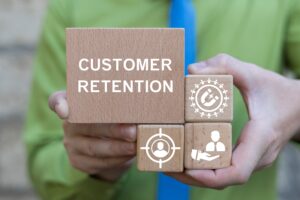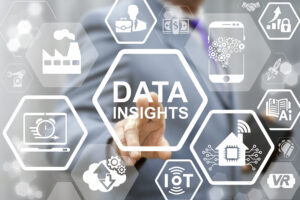The clean energy sector is growing at an unprecedented rate, fueled by rising consumer awareness of environmental challenges and a collective push toward sustainable solutions. For clean energy companies to thrive in this competitive market, innovative marketing strategies are essential. These strategies not only raise awareness about clean energy brands but also foster trust, loyalty, and long-term engagement with eco-conscious consumers.
This blog will discuss the advanced marketing techniques that can empower clean energy companies to stand out. It explores the importance of compelling brand narratives, the effective use of direct marketing strategies, and the creation of campaigns that resonate deeply with target audiences. By focusing on the intersection of marketing innovation and clean energy, we offer actionable insights for companies aiming to achieve sustainable growth and increased visibility.
The Foundation of Success: Compelling Brand Narratives
In a market increasingly driven by values and purpose, a compelling brand narrative sets the stage for clean energy companies to succeed. Beyond just selling products or services, a strong narrative communicates the “why” behind a brand—its mission, vision, and the unique impact it seeks to create. For clean energy companies, this means highlighting the vital role they play in combating climate change, empowering consumers, and fostering sustainable development.
Why Brand Narratives Matter
- Emotional Connection: Stories resonate deeply with consumers, creating an emotional bond that goes beyond transactional relationships. A well-crafted narrative can inspire loyalty and advocacy, turning customers into brand ambassadors.
- Differentiation: In a crowded marketplace, a unique story sets a brand apart. While clean energy companies may offer similar products, their story can make them memorable and relatable.
- Building Trust: A transparent and authentic narrative demonstrates accountability, showing consumers the brand’s genuine commitment to sustainability and innovation.
Key Components of a Strong Brand Narrative
- Purpose: Clearly articulate why the company exists and the change it seeks to bring to the world. For example, “Empowering communities with affordable and sustainable energy solutions” can serve as a brand’s guiding purpose.
- Impact: Showcase measurable outcomes, such as the number of households powered by renewable energy or reductions in CO₂ emissions achieved through the company’s solutions.
- People-Centric Stories: Highlight the individuals and communities positively impacted by the brand’s efforts, making the story relatable and human.
How to Craft a Memorable Narrative
- Start with the Origin Story: Share the company’s beginnings—whether it’s a founder’s personal passion for sustainability or a breakthrough innovation that changed the industry.
- Focus on Real-World Challenges: Paint a picture of the environmental issues the company aims to solve, emphasizing the urgency of its mission.
- Integrate Visuals and Data: Combine storytelling with visuals, infographics, and compelling data to appeal to both emotional and logical aspects of the audience’s decision-making.
By creating a narrative that aligns with their target audience’s values and aspirations, clean energy companies can effectively communicate their mission, stand out in a competitive market, and lay the foundation for long-term success.
Harnessing the Full Potential of Direct Marketing Services
In an industry as transformative as clean energy, direct marketing services play a critical role in fostering personal connections and delivering targeted messaging to eco-conscious audiences. By leveraging face-to-face interactions, personalized outreach, and community-focused campaigns, clean energy companies can build trust and establish lasting relationships with their customers.
The Role of Personalized Outreach in Building Awareness
Direct marketing thrives on personalized interactions that resonate with individual customers. By tailoring messaging to specific needs, clean energy companies can effectively showcase their innovations and encourage adoption.
Key Direct Marketing Strategies:
- Face-to-Face Demonstrations: Organize community events or in-home consultations where potential customers can see clean energy products in action, such as solar panel efficiency or energy storage solutions.
- Door-to-Door Campaigns: Equip representatives with the tools to explain the benefits of clean energy directly, offering personalized consultations based on each household’s energy needs.
- Interactive Presentations: Use hands-on activities, such as “calculate your carbon footprint” sessions, to engage and educate prospects during events or appointments.
Community-Focused Campaigns for Maximum Impact
Direct marketing services often thrive in local, community-based settings where clean energy solutions can have an immediate, tangible impact.
Community Engagement Tactics:
- Workshops and Seminars: Host educational sessions on renewable energy benefits, financing options, and installation processes to build credibility and trust within the community.
- Local Sponsorships: Partner with schools, nonprofits, or environmental organizations to sponsor events that align with the brand’s sustainability goals.
- Referral Programs: Encourage satisfied customers to refer friends and family by offering incentives such as discounts on services or eco-friendly gifts.
Enhanced Customer Support for Seamless Conversions
A critical aspect of direct marketing is ensuring that customer interactions lead smoothly to conversions. Clean energy companies can optimize the buying journey through personalized support.
Best Practices for Customer Support in Direct Marketing:
- On-the-Spot Consultations: Empower representatives to provide immediate, tailored recommendations and quotes during appointments or events.
- Printed Collateral: Distribute well-designed brochures or pamphlets with detailed information on clean energy solutions, financing options, and installation processes.
- Follow-Up Calls: Conduct follow-up phone calls to answer additional questions, clarify offers, and reinforce the benefits discussed during initial interactions.
Tailored Campaigns for Specific Segments
One of the strengths of direct marketing is its ability to adapt to diverse customer demographics and preferences.
Segment-Specific Direct Marketing Approaches:
- Homeowners: Focus on personalized energy audits that demonstrate potential cost savings and environmental benefits.
- Small Businesses: Highlight the competitive advantage and operational savings clean energy can provide to businesses embracing sustainability.
- Community Organizations: Develop programs that help organizations transition to renewable energy while achieving their sustainability goals.
Building Long-Term Relationships Through Direct Engagement
Direct marketing fosters relationships that extend beyond initial transactions. Clean energy companies can create loyal customers through ongoing communication and support.
Strategies for Long-Term Engagement:
- Customer Appreciation Events: Host events to celebrate milestones, such as a community reaching a renewable energy adoption goal.
- Periodic Check-Ins: Conduct routine follow-ups to ensure customers are satisfied with their clean energy solutions and offer upgrades or maintenance services.
- Exclusive Offers: Provide loyal customers with early access to new products or services, reinforcing their value to the brand.
By focusing on direct, personalized interactions, clean energy companies can establish themselves as trusted partners in the journey toward sustainability.
Precision Targeting: Campaigns That Resonate
In the competitive clean energy industry, crafting targeted campaigns is essential for engaging the right audience and achieving measurable results. By leveraging audience segmentation strategies and creating tailored messaging, clean energy companies can effectively communicate their value propositions, foster engagement, and drive adoption.
Audience Segmentation Strategies
Successful targeting begins with understanding who the audience is and what motivates them. Clean energy companies must segment their potential customers based on geographic, demographic, and behavioral factors to deliver highly relevant campaigns.
1. Geographic Targeting
Clean energy needs and solutions vary significantly by region, making geographic targeting a powerful tool.
- Sunny Regions: In areas with abundant sunlight, such as California or Arizona, campaigns can emphasize the high efficiency and cost-effectiveness of solar panels. Messaging might highlight something like: “Harness the power of the sun for year-round energy savings.”
- Windy Coastal Areas: Coastal and rural regions with strong winds are ideal for wind energy solutions. Campaigns could focus on the scalability of wind turbines for both residential and commercial applications.
2. Demographic Focus
Clean energy appeals to different age groups and lifestyles in unique ways, and demographic insights help shape targeted campaigns.
- Younger Generations: Millennials and Gen Z are often drawn to sustainable practices and innovative technologies. Campaigns for these groups should emphasize eco-friendly solutions, tech integration, and social impact. Messaging might include, “Join the renewable revolution—make your home smarter and greener today.”
- Established Homeowners: Middle-aged or older homeowners may prioritize long-term savings and energy independence. Campaigns could highlight the financial benefits of clean energy investments, such as reduced utility bills and increased property value.
3. Corporate Outreach
Businesses represent a critical segment for clean energy solutions as they increasingly aim to meet Environmental, Social, and Governance (ESG) goals.
Campaigns targeting corporate clients should focus on operational savings, reduced carbon footprints, and enhanced brand reputation. Messaging might say, “Power your operations sustainably—save energy, cut costs, and impress stakeholders.”
Implementing Precision Targeting: Tools and Techniques
Modern marketing tools allow clean energy companies to execute targeted campaigns efficiently. Key tools include:
- CRM Systems: Track customer data and segment audiences based on demographics, location, and purchasing behavior.
- Geotargeting Software: Deliver region-specific ads and messages that reflect local energy needs and incentives.
- AI-Driven Analytics: Use artificial intelligence to predict consumer preferences and optimize campaigns in real-time.
Precision targeting enables clean energy companies to engage the right audiences with the right messages. This strategic approach ensures every marketing effort contributes meaningfully to both business growth and environmental progress.
Building Consumer Trust Through Transparency
Trust is a critical factor in consumer decision-making in the clean energy industry. With growing awareness of greenwashing—where companies exaggerate or fabricate their environmental credentials—consumers are more discerning than ever. Transparency allows clean energy brands to build credibility, differentiate themselves from competitors, and foster lasting relationships with their customers.
Why Transparency Matters in Clean Energy Marketing
- Combating Greenwashing
Transparency counters consumer skepticism by providing verifiable evidence of environmental impact and sustainable practices. Customers are more likely to trust brands that back their claims with facts.
- Building Long-Term Loyalty
Honest communication fosters trust and loyalty, encouraging repeat business and positive word-of-mouth referrals. Transparency demonstrates that a brand values its customers and the planet equally.
- Enhancing Brand Reputation
A reputation for transparency positions a clean energy company as an industry leader, attracting environmentally conscious consumers and business partners.
Ways to Foster Transparency in Clean Energy Marketing
Clean energy companies can use several practical strategies to integrate transparency into their operations and clean energy marketing efforts.
1. Share Metrics and Data
Consumers want to see quantifiable proof of a company’s impact. Providing clear, accessible data helps validate a brand’s sustainability claims.
- Annual Sustainability Reports: Publish detailed reports on energy savings, carbon offsets, and the adoption rates of clean energy solutions. Break down these metrics into understandable formats, such as infographics or charts.
- Product Lifecycle Analyses: Share information about the environmental impact of products, from raw material sourcing to end-of-life disposal or recycling.
- Customer Impact Metrics: Provide individualized reports showing customers how much energy they’ve saved or how much carbon they’ve offset since adopting clean energy solutions.
2. Obtain and Display Certifications
Certifications from recognized organizations serve as third-party validation of a company’s environmental claims.
- LEED (Leadership in Energy and Environmental Design): Highlight buildings or projects certified for energy efficiency and sustainability.
- ENERGY STAR: Promote products that meet strict energy efficiency guidelines established by governments.
- Green Seal or CarbonNeutral Certifications: Demonstrate compliance with rigorous environmental standards, further boosting consumer confidence.
3. Practice Open Communication
Honesty about challenges and setbacks humanizes a brand and demonstrates a commitment to continuous improvement.
- Address Limitations: Acknowledge the product or service’s limitations while highlighting ongoing efforts to improve.
- Share Behind-the-Scenes Stories: Document the process of addressing sustainability challenges, such as reducing waste during production or innovating to improve product efficiency.
- Encourage Feedback: Invite customer input on sustainability initiatives and respond transparently to concerns or suggestions.
Sharing metrics, obtaining certifications, and practicing open communication demonstrate a commitment to both sustainability and honesty, ensuring customers feel confident in their decision to support clean energy solutions.
Green Solutions, Dynamic Campaigns
Your brand deserves more than just visibility—it needs a voice that inspires, educates, and drives change. At Maverick Marketing, we specialize in crafting innovative campaigns that highlight your green solutions and turn them into powerful, market-leading brands.
Whether it’s creating targeted campaigns, building trust through transparency, or developing compelling brand narratives, we’re here to help your clean energy company thrive. Let’s work together to craft dynamic strategies that resonate with eco-conscious consumers and deliver measurable results. Choose Maverick Marketing—where green solutions meet dynamic campaigns. Contact us today and power your brand forward.







